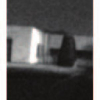Free Online Productivity Tools
i2Speak
i2Symbol
i2OCR
iTex2Img
iWeb2Print
iWeb2Shot
i2Type
iPdf2Split
iPdf2Merge
i2Bopomofo
i2Arabic
i2Style
i2Image
i2PDF
iLatex2Rtf
Sci2ools
ICPR
2006
IEEE
2006
IEEE
Motion Dependent Spatiotemporal Smoothing for Noise Reduction in Very Dim Light Image Sequences
A new method for noise reduction using spatiotemporal smoothing is presented in this paper. The method is developed especially for reducing the noise that arises when acquiring video sequences with a camera under very dim light conditions. The work is inspired by research on the vision of nocturnal animals and the adaptive spatial and temporal summation that is prevalent in the visual systems of these animals. From analysis using the so-called structure tensor in the three-dimensional spatiotemporal space, motion segmentation and global ego-motion estimation, Gaussian shaped smoothing kernels are oriented mainly in the direction of the motion and in spatially homogeneous directions. In static areas, smoothing along the temporal dimension is favoured for maximum preservation of structure. The technique has been applied to various dim light image sequences and results of these experiments are presented here.
Computer Vision | Dim Light Conditions | Gaussian Shaped Smoothing | ICPR 2006 | Spatiotemporal Smoothing |
| Added | 09 Nov 2009 |
| Updated | 09 Nov 2009 |
| Type | Conference |
| Year | 2006 |
| Where | ICPR |
| Authors | Henrik Malm, Eric Warrant |
Comments (0)

